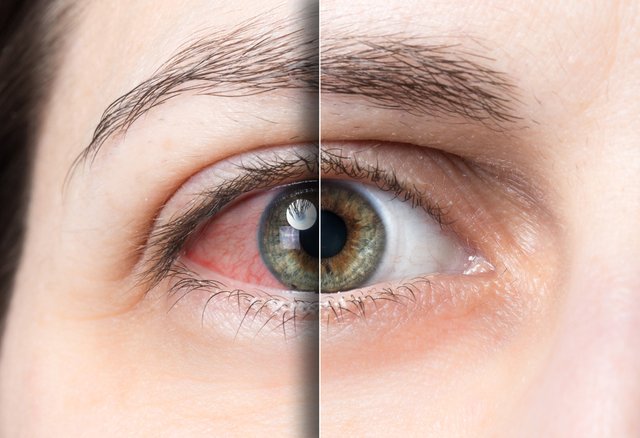Everything You Should Know about Dry Eye Syndrome

Dry eye syndrome (DES) is a common disease associated with insufficient hydration of the surface of the eyeball. This condition can significantly affect the quality of life, as the eyes play a key role in visually perceiving the world around us. People with dry eyes often experience discomfort, irritation, and blurred vision. In this article, we look at the causes, symptoms, diagnosis, and modern methods of treating dry eye syndrome.
Causes of dry eyes
Dry eye syndrome is caused by reduced tear production or accelerated evaporation of tear fluid. The main causes that can lead to the development of this disease include:
Insufficient production of tears
Tears provide the eyeball with the necessary moisture. When the glands responsible for tear production don’t function effectively, dry eyes can occur. This can be caused by age-related changes, chronic diseases like Sjögren's syndrome or diabetes, inflammation of the lacrimal glands, or damage to them.
Accelerated evaporation of tears
This process may be due to insufficient stability of the tear film, which covers the surface of the eye and prevents the evaporation of moisture. Accelerated tear evaporation is often associated with external factors such as dry climate, prolonged stay in air-conditioned rooms, use of electronic equipment, or prolonged use of contact lenses.
Disorders in the composition of tear fluid
Tears consist of three layers: aqueous, mucus, and lipid. A disturbance in the composition of these layers, such as, a lack of lipids, leads to an uneven distribution of the tear film and, as a result, to rapid evaporation of the tear fluid.
Other causes can include:
- Hormonal changes. Dry eyes are common in menopausal women as hormone levels, such as estrogen and progesterone, change, affecting tear production.
- Certain medications. Medicines such as antihistamines, antidepressants, diuretics, and birth control pills can reduce tear production.
- Vitamin deficiency. A lack of vitamin A can affect the condition of the tear film and affect the quality of tear production.
Symptoms of dry eyes
Symptoms of dry eye syndrome can range from mild to severe. The most common manifestations include:
- Burning and stinging in the eyes
- Redness of the eyeball
- A sensation of a foreign body in the eye (as if there were sand in the eye);
- Itching, especially in the corners of the eyes
- Blurred vision, especially in the evening
- Increased sensitivity to light (photophobia)
- Rapid eye fatigue when reading or working at the computer
- In some cases - excessive lacrimation (paradoxical reaction to lack of moisture)
If you have at least some of these symptoms, you can search for a "dry eye doctor near me" to evaluate your condition and undergo proper treatment.
Diagnosis of dry eye syndrome
An eye doctor can diagnose dry eye syndrome with the help of several methods:
- Interview and medical history. The doctor clarifies the symptoms, their frequency and intensity, and concurrent illnesses or factors that may affect the condition of the eyes.
- Schirmer test. This test measures the amount of tears produced by the eye. To do this, a special paper strip is placed under the lower eyelid to catch the tears. After 5 minutes, the hydration level of the strip is assessed.
- Fluorescein test. A special dye is applied to the eye's surface to detect corneal lesions characteristic of dry eye syndrome and to assess the uniform distribution of the tear film.
- Tear osmolarity test. By measuring the osmolarity (salt concentration) of the tear fluid, the degree of dry eye can be assessed.
Dry eye treatment
Dry eye syndrome treatment aims to eliminate the symptoms and restore the normal moisture level in the eyeball. Current treatment methods include:
- Artificial tears. The most common way to combat dry eyes is to use artificial tears – moisturizing drops that compensate for the lack of tear fluid.
- Gels and creams. In more severe cases of dry eye syndrome, the doctor may recommend moisturizing gels and creams.
- Anti-inflammatory treatment. If the dry eye is accompanied by inflammation, treatment with corticosteroids or immunomodulators may be necessary.
- Good nutrition and vitamins. A diet rich in omega-3 fatty acids (fish, flaxseed oil) can help improve the quality of the tear film. It is also important to monitor the amount of vitamin A, which is essential for eye health.
- Lifestyle changes. Patients with dry eye syndrome are advised to avoid extended stays in dry and windy places, limit the time they use appliances, and pay attention to eyelid hygiene to prevent inflammation of the meibomian glands.